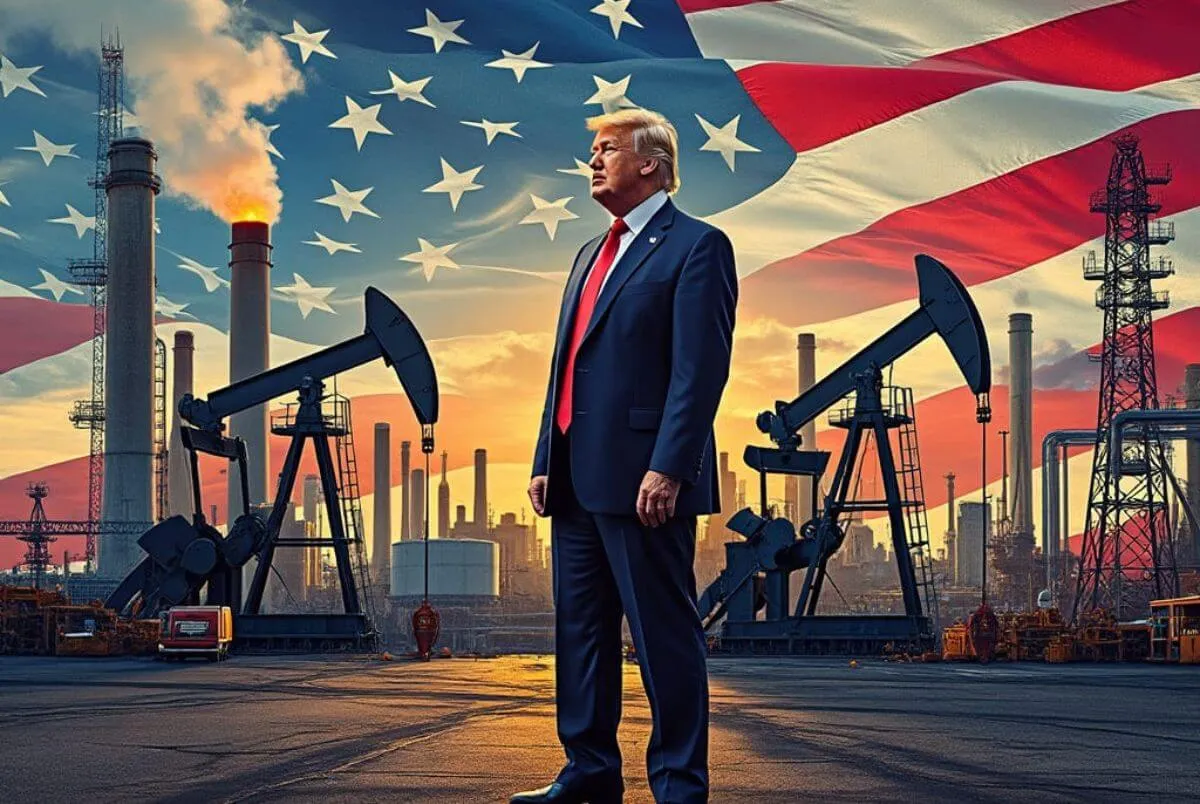November 11, 2024
While the impact of tariffs may raise costs and risks, strategic support for energy could align with Trump’s broader goals of American strength, security, and economic resilience.

Donald Trump’s proposed tariffs, including a 10-20% universal tariff on foreign goods and a potential 60% tariff on Chinese imports, could hit U.S. oil and gas producers in significant ways, from driving up production costs to shaking up international demand. But there’s a twist: Trump has been known to make selective exceptions for certain industries. Just as he’s previously exempted sectors like steel and aluminum to protect U.S. jobs, he might consider carve-outs for U.S. energy. Here’s how these tariffs could play out and why the energy sector might see a special path forward.
• Steel and Aluminum Impact: Oil and gas producers rely on vast quantities of steel and aluminum for pipelines, rigs, and infrastructure. When Trump first imposed tariffs on steel and aluminum in 2018, the energy industry faced immediate cost increases. Take, for example, the Keystone XL pipeline, which was estimated to cost an extra $1 billion due to the tariff. Higher costs mean less capital for new projects and increased consumer prices.
• Possible Exemptions: Trump made tariff exceptions in 2018 for some steel-importing companies that could prove their materials weren’t available domestically. If tariffs become a bigger challenge for energy, it’s possible similar exceptions might be extended to oil and gas producers to support U.S. energy independence.

• Retaliatory Tariffs: Countries impacted by these tariffs, particularly China, could respond by placing tariffs on U.S. oil and gas imports. In 2019, when China imposed a 25% tariff on U.S. liquefied natural gas (LNG), American exports to China dropped almost by half. For oil and gas producers, retaliatory tariffs could mean fewer international buyers and reduced export revenue.
• Strategic Exceptions: Trump has a record of adjusting tariffs to support U.S. interests. During the trade war, for instance, he negotiated targeted deals for U.S. agriculture to maintain demand in key markets. A similar approach could help the energy industry by securing specific partnerships or adjusting tariffs to allow for smooth energy trade, particularly with strategic allies.
• Supply Chain Costs: Higher material costs and supply chain delays are likely to trickle down to U.S. consumers. Analysts at the Federal Reserve estimate that tariffs on imported steel could increase gasoline prices by 10-15 cents per gallon due to increased costs for infrastructure maintenance and development.
• Mitigating Consumer Impact: Given that Americans spend over $400 billion on gasoline annually, even a small increase affects household budgets. With this in mind, Trump could use a selective approach, offering exemptions or reduced tariffs for materials specific to U.S. energy production to keep gas prices stable.
• Reduced Domestic Production: Higher tariffs could make it less attractive for U.S. producers to invest in new projects, potentially slowing production in regions like the Permian Basin, where growth depends on efficient, cost-effective development. If fewer wells are drilled and pipelines constructed, the U.S. could see a dip in its energy independence—a key policy goal.
• Prioritizing Energy Security: To balance security concerns, Trump could implement special measures for U.S. energy, recognizing its role in national security. Just as he has previously protected U.S. industries vital to economic stability, he could take steps to safeguard energy independence by offering targeted relief to energy companies.
• Job Losses in Construction and Production: The American oil and gas industry supports over 10 million jobs. A slowdown in production or construction could impact thousands of jobs, particularly in states like Texas, Oklahoma, and North Dakota. For example, the Energy Equipment and Infrastructure Alliance estimated that increased steel prices could put 40,000 pipeline construction jobs at risk.
• Boosting Domestic Production Incentives: To counteract these potential job losses, the administration could enhance support for energy projects and incentivize domestic production, ensuring stability and job creation in the sector. This aligns with Trump’s tendency to protect critical U.S. industries.
• Renewable Sector Impacts: Tariffs on imported steel and aluminum don’t just impact oil and gas; they also affect renewable energy projects. Higher material costs could slow wind and solar projects, inadvertently prolonging reliance on fossil fuels. This has implications for U.S. goals around clean energy and carbon reduction.
• Potential Renewable Incentives: Given the rising focus on clean energy, Trump’s policies could extend exemptions or tax incentives to renewables to avoid stalling this sector’s growth. Such measures could prevent renewable energy sources from becoming less competitive, while still supporting U.S. fossil fuel production.
Trump’s tariffs present both challenges and opportunities for U.S. oil and gas producers. While increased costs, export difficulties, and potential domestic price hikes are likely, the administration’s history of selective exemptions could provide the energy sector with some relief. By balancing these tariffs with targeted adjustments, Trump could reinforce U.S. energy independence, maintain job stability, and protect consumers—all while fostering a competitive edge in the global market.
In the end, while the impact of tariffs may raise costs and risks, strategic support for energy could align with Trump’s broader goals of American strength, security, and economic resilience.